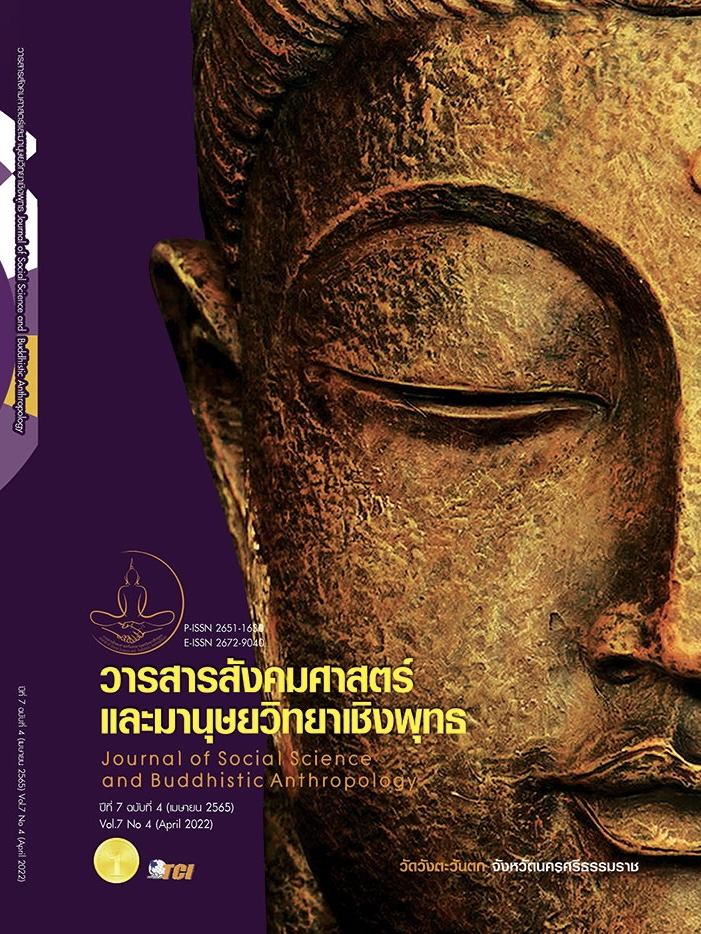THE DIFFERENCES IN GENDER AND TYPE OF PERSONALITY THAT AFFECT THE MARKETING STRATEGY OF “BRAND’S” PRODUCTS IN THE STUDENTS AT RAJAMANGALA UNIVERSITY OF TECHNOLOGY TAWANOK, BANGPHRA CAMPUS
Keywords:
Gender Differences, Personality, Marketing Strategies, Products BRAND’SAbstract
The objectives of this research article were to compare the opinions of marketing strategies of the “BRAND’S” product classified by gender and personality, this was a survey research by using the questionnaire to collect data, studying with 360 students of Rajamangala University of Technology Tawan - OK Bangpra Campus in the 2017 academic year. male respondents with extravert personality, male respondents with ambivert personality, female respondents with extravert personality, and female respondents with ambivert personality, sample of 90. The researcher analyzed the data by using statistics, percentage, mean, standard deviation, and analyzed differences of marketing strategies of the “BRAND’S” product between males and females, extravert personality and ambivert personality with independent samples T - Test. According to the results, the group of 20 – 21 years old student is the biggest sample group in this study which has 195 respondents. The data showed that the group of male respondents give the priority to Product ( = 4.16, S.D. = 0.555). However, the data showed that the group of female respondents give the priority to sale Promotions (
= 4.21, S.D. = 0.581). The Extraverts showed that they give priority to Advertisement (
= 4.34, S.D. = 0.322) and sale Promotions (
= 4.34, S.D. = 0.362) and the Ambiverts showed that they give the priority to Product (
= 4.00, S.D. = 0.665). The results of the analysis indicated that there were insignificant differences in opinion towards the marketing strategies of the “BRAND’S” products, price and place, advertisements, and sale promotions at the level of .05. However, there were significant differences in opinion towards the marketing strategies of the “BRAND’S” product between Extravert and Ambivert personality in products, price and place, advertisements, and sale promotions at the level of .01.
References
เนตรนภา ปรียาณุรักษ์. (2561). ผลของความแตกต่างทางเพศและบุคลิกภาพในผู้ใหญ่ตอนต้นที่มีต่อข้อความภาษาไทยและเสียงดิจิทัล ที่เร้าอารมณ์ด้านประทับใจ: การศึกษาเชิงพฤติกรรมและคลื่นไฟฟ้าสมองสัมพันธ์กับเหตุการณ์. ใน ดุษฎีนิพนธ์ปรัชญาดุษฎีบัณฑิต สาขาวิชาการวิจัยและสถิติทางวิทยาการปัญญา. มหาวิทยาลัยบูรพา.
พิชัย ลัทธิศักดิ์. (2559). ปัจจัยที่มีผลต่อส่วนประสมทางการตลาดและพฤติกรรมการบริโภคน้ำดื่มบรรจุขวดของผู้บริโภคในเขตหลักสี่ กรุงเทพมหานคร. วารสารรัชต์ภาคย์, 10(19), 73-78.
ศรันยา หงษ์ทอง และคณะ. (2562). ผลของโฆษณาที่ใช้จินตภาพด้านความหลากหลายทางเพศต่อพฤติกรรมผู้บริโภค. วารสารนิเทศศาสตร์, 37(3), 89-108.
สำนักส่งเสริมวิชาการและงานทะเบียน. (2560). จำนวนนักศึกษาทั้งหมด. เรียกใช้เมื่อ 10 กรกฎาคม 2560 จาก https://academic.rmutto.ac.th/?p=526
Benton, D. & Young, H. A. (2015). The Effect of chicken essence on cognition and mood: A Randomized controlled trial. Current Topics in Nutraceuticals Research, 13(2), 61-70.
BRANDS World Thailand. (2560). Brand’s World Thailand สุขภาพ/ความงาม. เรียกใช้เมื่อ 2 เมษายน 2560 จาก https://www.facebook.com/BRANDS WorldThailand/photos
Costa Jr, P. T., et al. (1986). Cross - sectional studies of personality in a national sample: II. stability in neuroticism, extraversion, and openness. Psychology and Aging, 1(2), 144-154.
Goldstein, J. M. et al. (2001). Normal sexual dimorphism of the adult human brain assessed by in vivo magnetic resonance imaging. Cereb Cortex, 11(1), 490-497.
Kotler, P. & Armstrong, G. (2009). Principles of marketing. NJ: Pearson Prentice Hall.
Krejcie, R. V. & Morgan, D. W. (1970). Determining Sample Size for Research Activities. Educational and Psychological Measurement, 30(3), 607-610.
Kret, M. E. & De Gelder, B. (2012). A review on sex differences in processing emotional signals. Neuropsychologia, 50(7), 1211-1221.
Matias, L. (2014). The Effects of Music Complexity on Memory in Introverts and Extroverts. The Huron University College Journal of Learning and Motivation, 52(1), 1-10.
Salmela Zernova, M. (2010). Motives for consumption of luxury goods. Retrieved October 15, 2016, from https://www.theseus.fi/handle/ 10024/24285
Valette-Florence, P. et al. (2011). The impact of brand personality and sales promotions on brand equity. Journal of Business Research, 64(1), 24-28.
Downloads
Published
How to Cite
Issue
Section
License
Copyright (c) 2022 Journal of Social Science and Buddhistic Anthropology

This work is licensed under a Creative Commons Attribution-NonCommercial-NoDerivatives 4.0 International License.








